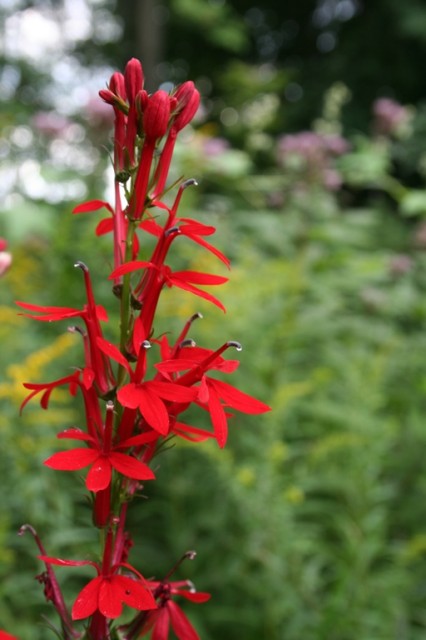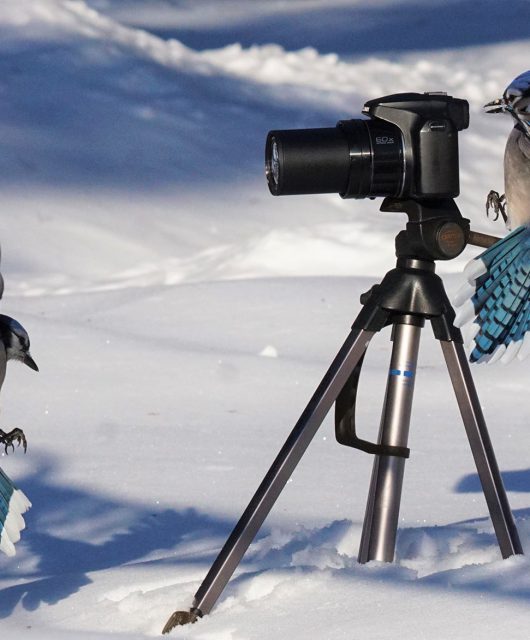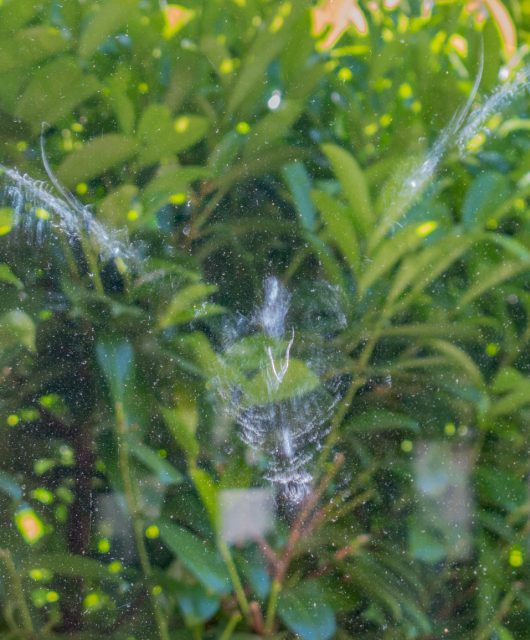[PHOTOS: CWF]
Well, we’re now officially in a level 2 drought, with no rain for weeks and temperatures continuing in the 30s and sometimes 40s with humidity.
The plants in our wildlife-friendly demonstration garden are managing but there are definitely signs of stress with shorter bloom times and smaller overall plant sizes. Many plants are still perky but some are droopy and a few downright floppy. These Canadian natives can normally manage our hot dry spells just fine, pretty wonderful when you consider we don’t water any established plants.
One way to help these plants year to year, in addition to planting them in spots that match their soil, light and moisture conditions, is to amend the soil with moisture retaining organic material like compost or aged manure. Mulch also helps a lot and I can see the difference when it’s used, not only for conserving water but also for suppressing weeds, returning organic material to the soil and keeping soil temperatures more even than if the soil was directly exposed to the hot sun each day. We do add more every few years as it’s worth the time and money!
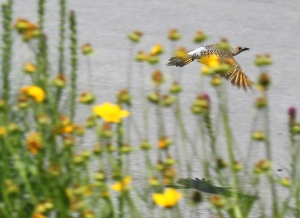
As to what’s new this week, well I finally had time and good fortune to get a photo of one of our yellow shafted flickers, going to and fro from our recirculating stream (which keeps pumping the same water) to their hole in one of our snags – a dead standing tree that provides homes and a source of food for birds (insects). It’s not a great shot, but you can see some of its cool markings. They are neat woodpeckers that actually forage on the ground eating ants! See if you can spot it in the photo below – it’s peeking out of its cavity home.
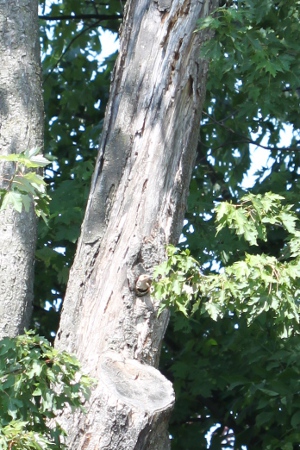
We have many birds who make good use of our stream, such as waxwings, warblers, goldfinches, red-winged blackbirds, cardinals, catbirds, flickers and crows. We also have a pair of orioles and I was able to get a photo (another not so great shot) of one having a bath. It shows its colourful black, orange and white markings (below).
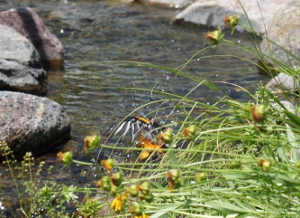
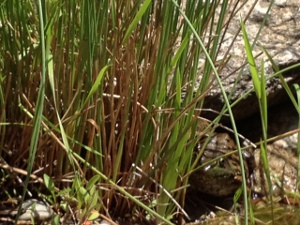
Alain got a photo of our resident green frog the other day, hiding behind the grasses. Melissa tells me how she can get so close, weeding around the pond, and it won’t budge even when she’s only a few centimetres away!
As to flowers, the cardinal flower (see top blog photo) is now blooming. Its brilliant read blooms are great for hummingbirds and uplifts most people who see them. They like moist soils with light shade.

Black cohosh is a large and wide perennial with tall spikes of white flowers that often catch our visitors’ eyes.
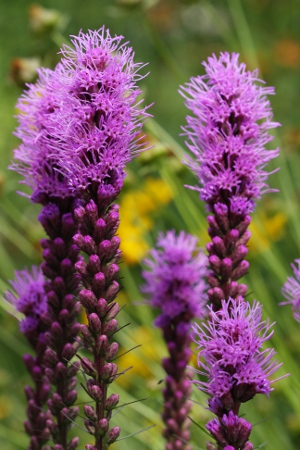
We have had a few species of Liatris – aka gayfeather or blazing star – in the garden beds. This Liatris spicata is one that can be commonly found in nurseries.
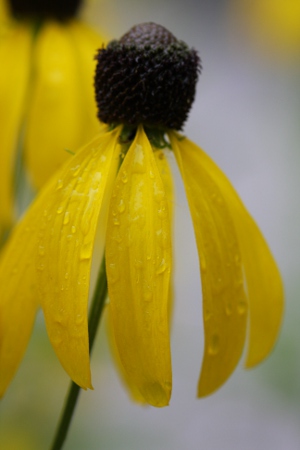
Our tall prairie yellow coneflower (Ratibida pinnata) is just starting to bloom now. They spread but are easly manageable with a yearly weeding. I’m using an older photo that I like to show this beautiful flower…it has rain drops on its petals, something we haven’t seen in weeks!
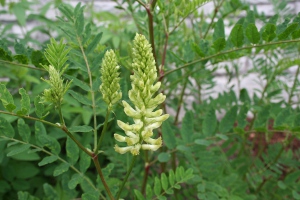
Canada milkvetch (Astragalus canadensis) in our Drought Bed is also blooming. It doesn’t spread aggressively like other vetches you might be familiar with, the ones with pink clusters or purple spikes that grow along roadsides.
Many plants are also forming berries, such as our dogwoods and viburnums. I’ll post some images soon. In the meantime, check out these fuzzy fragrant sumac berries below.
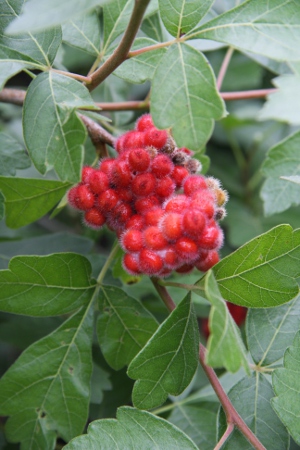
If you wish to see more photos of these and other Canadian native plants, visit our Native Plant Encyclopedia. We will be continually adding more entries, photos and content as time goes by. If you have photos for plant entries lacking pictures, feel free to send them in!

